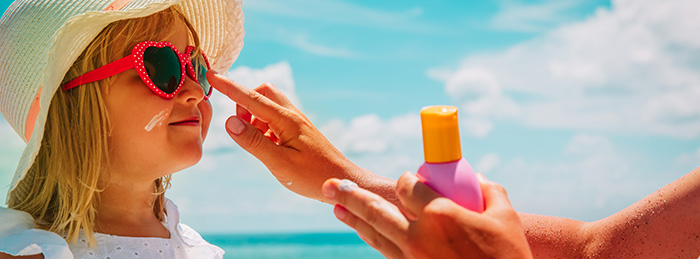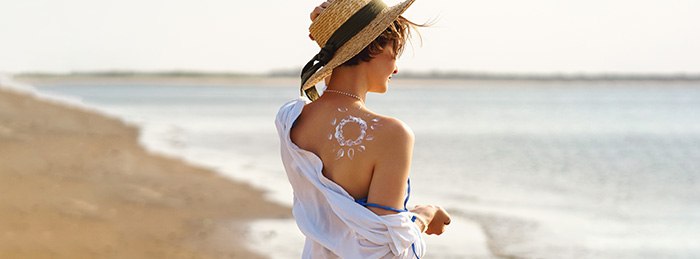July is UV Awareness Month: Protecting Yourself from Harmful Ultraviolet Radiation Effects
July marks UV Awareness Month, a crucial time to raise awareness about the dangers of ultraviolet (UV) radiation, outline UV effects, and encourage the public to take necessary precautions. What is UV radiation? UV radiation is a form of electromagnetic radiation that emanates from natural sources such as the sun and artificial sources, including tanning beds and welding torches. It has both beneficial and harmful effects on human health, primarily depending on the level and duration of exposure.
The American Cancer Society, the National Institutes of Health (NIH), and the American Academy of Dermatology (AAD) provide extensive information on the nature of UV radiation, its sources, associated health risks, and measures for protection. This PHI Cares article delves into the intricacies of UV radiation, the dangers it poses – particularly skin cancer – and practical steps for UV safety during UV Awareness Month.

Understanding UV Radiation
What is UV Radiation?
UV radiation is part of the electromagnetic spectrum between visible light and X-rays. It is more energetic than visible light but less so than X-rays. UV radiation is classified into three types based on its energy levels:
- UVA rays: These have the least energy and can cause skin aging and some indirect DNA damage.
- UVB rays: With slightly more energy than UVA rays, UVB rays can directly damage DNA in skin cells and are the primary cause of sunburn and most skin cancers.
- UVC rays: The most energetic and potentially harmful type of UV radiation. Fortunately, UVC rays are absorbed mainly by the ozone layer and do not reach the Earth’s surface.
The Science of UV Radiation
UV radiation is energy produced by the sun and some artificial sources. The sun emits different types of radiation, of which UV radiation makes up only a tiny portion. However, these rays have significant biological effects. Understanding the nature and types of UV radiation is crucial for comprehending how they affect human health.
- Electromagnetic Spectrum: UV radiation lies between visible light and X-rays on the electromagnetic spectrum. It has shorter wavelengths and higher energy than visible light but longer wavelengths and lower energy than X-rays.
- Types of UV Radiation: The spectrum of UV radiation is divided into UVA, UVB, and UVC rays, each with varying degrees of energy and penetration capabilities.

Common Sources of UV Radiation: Natural vs Artificial
Natural Sources of UV
The sun is the primary source of UV radiation. Despite UV rays making up only a small portion of the sun’s rays, they have significant health impacts. The intensity of UV radiation reaching the Earth’s surface varies based on several factors:
- Time of day: UV rays are strongest between 10 a.m. and 4 p.m.
- Season: UV radiation is more intense during spring and summer.
- Latitude: UV exposure decreases as one moves away from the equator.
- Altitude: Higher elevations receive more UV radiation.
- Cloud cover: Clouds can filter UV radiation, but significant amounts can reach the ground even on cloudy days.
- Surface reflection: Surfaces like water, sand, and snow can reflect UV rays, increasing exposure.
Man-Made or Artificial Sources of UV
Artificial sources of UV radiation include:
- Tanning beds: Emit mostly UVA rays, with some UVB.
- Phototherapy: Used to treat certain skin conditions with controlled UV exposure.
- Black-light lamps: Emit UV rays used to view fluorescent materials and in bug zappers.
- Mercury-vapor lamps: Used in public lighting; exposure can occur if the protective outer bulb breaks.
- Welding arcs and plasma torches: Emit intense UV radiation, posing workplace hazards.
Health Risks of UV Radiation
Skin Cancer
Exposure to UV radiation is a major risk factor for most skin cancers, including:
- Basal cell carcinoma (BCC): Often found on sun-exposed areas, associated with cumulative sun exposure.
- Squamous cell carcinoma (SCC): Similarly linked to long-term sun exposure.
- Melanoma: The most dangerous form of skin cancer, associated with intermittent, intense UV exposure leading to sunburn.
Other Health Effects
UV radiation can cause a range of other health issues, including:
- Sunburn: An acute inflammatory reaction characterized by red, painful skin.
- Premature skin aging: Manifested as wrinkles, leathery skin, and liver spots.
- Eye damage: Including cataracts and pterygium, which impair vision.
- Immune suppression: Reducing the body’s ability to fend off infections and making vaccines less effective.
Preventing UV Exposure
Sun Protection Strategies
To prevent UV radiation-related health issues, it is crucial to adopt effective sun protection measures. During UV Awareness Month, the American Academy of Dermatology emphasizes three key steps:
- Seek Shade: Especially during peak UV hours.
- Wear Sun-Protective Clothing: Including lightweight, long-sleeved shirts, pants, a wide-brimmed hat, and sunglasses with UV protection.
- Apply Sunscreen: Use a broad-spectrum, water-resistant sunscreen with an SPF of 30 or higher, reapplying every two hours and after swimming or sweating.
Additional Protective Measures
- Choose Dense Fabrics: Dark or bright colors and densely woven fabrics offer better UV protection. For instance, a long-sleeved denim shirt provides an SPF of about 1,700, while a white t-shirt provides an SPF of about 7.
- Use Sunglasses with UV Protection: Select sunglasses that block 100% of UV rays. Large-framed or wraparound sunglasses offer more protection than smaller styles.
- Wear a Wide-Brimmed Hat: This helps cover the face, neck, and ears. Avoid hats with holes, such as straw hats, which allow UV rays to penetrate.
- Footwear: If wearing sandals or going barefoot, apply sunscreen to exposed skin.
Decoding Sunscreen Labels
Not all sunscreens act the same. Understanding sunscreen labels can be confusing but is essential for effective sun protection. Here’s a breakdown of common terms:
- Broad Spectrum: Protects against both UVA (aging) and UVB (burning) rays, helping prevent skin cancer, early skin aging, and sunburn.
- SPF (Sun Protection Factor): Indicates how well the sunscreen protects against UVB rays. An SPF 30 sunscreen filters out 97% of UVB rays.
- Water Resistant: Indicates how long (40 or 80 minutes) the sunscreen remains effective on wet skin. Reapply every two hours, or more often if swimming or sweating.
Chemical vs. Physical Sunscreens
- Physical Sunscreens: Contain active ingredients like titanium dioxide and zinc oxide, which reflect UV rays. Recommended for sensitive skin.
- Chemical Sunscreens: Contain organic (carbon-based) compounds that absorb UV rays, such as avobenzone and oxybenzone.
Sunburn: Causes, Treatment, and How To Prevent Getting Sunburnt
Causes of Sunburn
Sunburn occurs due to prolonged exposure to UV radiation, leading to DNA damage in skin cells. Several factors influence the risk of sunburn, including:
- Medications: Certain drugs can increase sensitivity to UV radiation.
- Environmental Factors: Time of day, altitude, and proximity to the equator.
- Skin Type: People with lighter skin are more prone to sunburn.
Symptoms and Complications
Sunburn symptoms range from mild redness to severe blistering and can be accompanied by systemic symptoms like fever and nausea. Repeated sunburns will increase the risk of skin cancer and cause premature skin aging.
Treatment and Management
Most sunburns can be treated at home:
- Avoid Further Sun Exposure: Stay indoors or cover up.
- Pain Relief: Use over-the-counter pain relievers like NSAIDs.
- Hydration: Drink plenty of fluids.
- Cool Compresses and Aloe Vera: To soothe the skin.
- Avoid Local Anesthetics and Corticosteroids: They do not aid sunburn healing.
Severe sunburns with extensive blistering may require medical attention and fluid replacement.
The Role of Healthcare Professionals
Healthcare providers play a crucial role in UV safety education and sunburn management:
- Primary Care and Dermatology Clinicians: Should conduct regular skin screenings and counsel patients on sun safety.
- Pharmacists: Can advise on appropriate sunscreens and over-the-counter treatments.
- Public Health Campaigns: Essential for raising awareness about the dangers of UV radiation and the importance of protection.
Special Considerations for High-Risk Groups
Certain populations are at higher risk of adverse effects from UV radiation and require specific attention:
- Children and Adolescents: Younger skin is more sensitive to UV damage. Protective measures include seeking shade, wearing protective clothing, and using sunscreen.
- Individuals with Fair Skin: Those with lighter skin types are more prone to sunburn and should take extra precautions to avoid prolonged sun exposure.
- Outdoor Workers: People who work outdoors should use UV-protective measures, including wearing appropriate clothing and applying sunscreen regularly.
UV Radiation and Vitamin D
UV radiation from the sun is a natural source of vitamin D, which is essential for bone health and has other health benefits. However, excessive sun exposure increases the risk of skin cancer. It is generally safer to obtain vitamin D through diet and supplements rather than prolonged sun exposure.
Community and Policy-Level Interventions
Community-level interventions and policies can play a significant role in promoting UV safety:
- Educational Programs: Schools and workplaces can implement educational programs to teach the importance of UV protection.
- Providing Shade: Creating shaded areas in public spaces, such as parks and playgrounds, can reduce UV exposure.
- Regulations on Tanning Beds: Policies restricting the use of tanning beds, especially among minors, can help reduce skin cancer risk.
Research and Future Directions
Ongoing research continues to explore the effects of UV radiation on health and the best strategies for protection. Innovations in sunscreen formulations, UV-protective clothing, and public health campaigns are critical areas of development.
PHI Air Medical Wants Our Communities to Stay Safe During the Summer Months
PHI Air Medical is dedicated to the safety and well-being of our communities. During UV Awareness Month, we highlight the importance of UV safety, particularly in the high-exposure summer months. We encourage everyone to:
- Follow Sun Protection Guidelines: Adhere to the recommended sun safety measures, including seeking shade, wearing protective clothing, and applying sunscreen.
- Educate and Inform: Share information about the dangers of UV radiation and the importance of sun protection with family and friends.
- Stay Prepared: Keep sun protection items like hats, sunglasses, and sunscreen readily available, especially when planning outdoor activities.
PHI Cares Air Ambulance Membership: Protecting You from Out-of-Pocket Costs
In addition to promoting UV safety, PHI Air Medical offers the PHI Cares air ambulance membership program, designed to provide financial protection in case of an air medical emergency. If you or a loved one require air med evacuation or life flight services, the PHI Cares membership can cover the cost of the PHI Air Medical life flight, giving you access to critical care without the burden of out-of-pocket expenses. Learn more about our air ambulance insurance, how it works, & benefits.
Join PHI Cares today to achieve peace of mind and protect yourself from unexpected medical transport costs. For more information about PHI Cares and how it can benefit you, visit our PHI Cares website or contact us directly at I-888-435-9744.
PHI Cares: UV Awareness Month Conclusion
Understanding UV radiation and its effects is crucial for preventing skin cancer and other health issues associated with excessive UV exposure. By adopting sun safety practices and avoiding artificial UV sources, individuals can protect themselves from the harmful effects of UV radiation. During UV Awareness Month and beyond, it is essential to follow the guidelines set by health organizations and dermatologists to reduce the incidence of skin cancer and improve public health outcomes. Stay safe, stay informed, and enjoy the summer with confidence, knowing that PHI Air Medical and PHI Cares are here to support and protect you.


